Episode: caring for a flower at home
Among the variety of indoor flowers, there are many that require specific growing conditions, cold wintering, long-term bright lighting. All this is difficult to provide in an ordinary apartment. The more valuable seem to be such plants as episation, caring for which at home will not cause difficulties even for novice florists.
Content:
- Description of the plant
- Growing conditions
- Watering, feeding, pruning
- Transfer: terms and rules
- Diseases and pests and their control
Description of the plant
Episia is a flowering plant belonging to the Gesneriaceae family, which includes the famous Usambara violets or Saintpaulias. The native land of the plant is the rainforests of Colombia, rich in rain.
In indoor floriculture, there are mainly two types of episodes - carnation and copper.
The main pride of the plant is its very decorative velvety leaves. They create a radiant effect thanks to the reflective properties of the villi. Episode clove leaves are small (2-3 cm), dark green with a purple streak, and the flowers are white with fringes around the edges. Copper episode has larger leaves (up to 10 cm) with reddish-brown pubescence and silvery stripes. The flowers are bright red with a yellow center.
In hybrids derived from these two species, the color of the leaves can be different: green, red, brown and silver shades with bizarre patterns. There are many varieties: Pink Acajou, Silver Sheen, Kee Wee, Strawberry Mist, Pinkiscia, Show Time, Emerald Velvet and others. Episation can be grown as a bush or ampelous crop. In this plant, two types of shoots are formed: shortened and long ones with thin whiskers, on which daughter shoots appear (like strawberries).
Growing conditions
As a tropical plant, when kept at home, the episode requires high humidity. To provide the flower with the desired level, you can place the pot in a tray with sphagnum or wet expanded clay, put a container of water next to it. You just need to make sure that the bottom of the pot does not come into direct contact with moisture, otherwise the roots may rot. The ampel lettering is hung in a flowerpot. In this case, you need to especially monitor the humidity.
Episode needs a constant air temperature: 20-25 ° C in summer, slightly lower in winter, but not less than 18 ° C. Drafts and hypothermia are unacceptable. Adapted to shady forests, the flower does not tolerate direct sunlight. Ornamental leaves may fade and discolor. Optimal conditions are diffused lighting, placement on western or eastern windows.
Episodes bloom from early spring to mid-autumn with sufficient light.
They prefer a long day; in a short day, they may not bloom. The soil for growing is chosen loose, well permeable to air and moisture. For this, sand, vermiculite, coconut fiber, sphagnum are added to the substrate. Alternatively, you can use violet soil mixed with vermiculite or perlite. It is imperative to provide good drainage at the bottom of the pot, for example, from expanded clay.
Special growing conditions require the so-called watercolor episodes. In these plants, the content of chlorophyll is reduced in comparison with the usual episodes, which is why their leaves have an amazing color.Such varieties should not be kept in an open place, but exclusively in greenhouses or florariums, since they are extremely demanding on air humidity. On the windowsill, the leaves begin to dry immediately. Only experienced flower growers manage to accustom individual specimens to normal conditions. Some varieties: Pink Smoke, Unpredictable Valley, Ember Lace, Pink Shimmer Valley.
Watering, feeding, pruning
Consider the main points in plant care:
- Watering the episodes need abundant and regular. Warm, standing water is best. Water the plant as soon as the top layer of the soil dries out, but it is impossible to allow stagnation of water in the pan. In winter, watering is reduced to 1-2 times a week. Frequent spraying of the air around the plant is recommended to maintain moisture. However, it is not necessary to allow water droplets to hit the leaves.
- Top dressing is carried out regularly, every two weeks. complex mineral fertilizer for flowering at half concentration. In winter, feeding is stopped. With an excessive amount of fertilizer, the leaves may lose their pattern, turn green.
- When leaving, remove faded buds and dried leaves.
- Trimming the appearing daughter outlets is carried out regularly. To add splendor, they are transplanted into a pot to the mother plant. However, growers do not recommend growing several different varieties of episode in the same container, since some specimens (stronger varieties) will suppress the growth of others.
- From time to time, the episodes are given a warm shower. In this case, the ground is covered with a waterproof material. After such a procedure, the flower must dry well and settle before it can be returned to its permanent place.
When forming plants in a group planting (of 2-3 pieces), the top of one flower is cut off to stimulate the formation of lateral shoots.
Transfer: terms and rules
It is recommended to renew the plant every 2-3 years, since by this time it stretches and loses its decorative effect. The best time for such a procedure is spring. The container for growing is chosen shallow, but wide, because the root system of the flower is superficial.
The episode is propagated at home by daughter processes or apical cuttings. The procedure is standard:
- the stalk is placed in a loose substrate
- covered with foil or glass to create greenhouse conditions
- put the container in a warm place for rooting
- planted sprouts are regularly watered
- periodically the film is removed and the seedling is ventilated so that mold does not form on the soil and the stalk does not rot
You can plant a daughter outlet without cutting it off from the mother plant until rooting. Some gardeners do not separate the whiskers at all, but lay them on the surface of the pot and slightly add them to the natural rooting of the rosettes. When an adult plant is strongly stretched, the top is cut off and rooted in the same way as described above.
You do not need to immediately plant a young plant in a large pot. For a start, a 100-gram glass is enough. After a month, the grown seedling is transferred into a container with a diameter of 8 cm, after another couple of months - 12 cm.
Interesting! When the episode is propagated by halves of leaves, you can get a different color of the plant.
Diseases and pests and their control
Of the pests, the episode is affected by aphids and the cyclamen mite. Cyclamen mite is a very small white or yellowish pest. Withstands high temperature and humidity. Lives on the tops of the shoots in young leaves. Signs of defeat:
- slow growth
- gray bloom
- dried young leaves on the tops
- tucking the edges of old leaves
To combat the tick, spraying with acaricides is used according to the instructions (for example, Fitoverm), the affected tops are cut off and destroyed. The diseased plant is isolated and quarantined. From aphids, the flowers are washed with soapy water. In case of severe damage, use the same Fitoverm or Aktar (according to the instructions).
The emerging diseases of the episode are mainly associated with errors in the maintenance and care:
- too frequent and abundant watering at a low temperature of the substrate leads to decay root system
- cold water can cause brown spots on the leaves
- yellowing of leaves can be caused by too dry air in the apartment or excess fertilizers
- in too bright sun the leaves get sunburn and dry out
- with a lack lighting the drawing on the leaves turns pale, the plant stretches and loses its decorative effect, does not bloom
More information can be found in the video:
Ailments from improper care are "treated" by leveling irrigation, a dose of fertilizers and changing the lighting regime. When rot appears on the roots, the plant is difficult to save. In this case, you should:
- cut cuttings with healthy tissue from the plant
- sprinkle the cuts with crushed coal and dry
- plant rescued cuttings in sphagnum moss and create greenhouse conditions
- wait for the roots to appear
The general measures for the prevention of the appearance of pests and diseases for all indoor flowers, including for the episode, are as follows:
- each new flower is kept in quarantine separately from the main collection
- vases with bouquets are not placed next to houseplants, as pests can spill over from flowers in the cut
- carefully observe the conditions for keeping plants so as not to stress their immune system
We hope you were able to make sure that Episation is a versatile plant. It can be grown as a bush in a pot on the windowsill, or you can let the meter-long shoots hang from the pots on the window. The plant does not require special attention, it does not need a special wintering with a drop in temperature. Even without flowers, the episode is very decorative, and the patterns on the leaves will leave few people indifferent. Get an epic at home and it will decorate your apartment all year round.



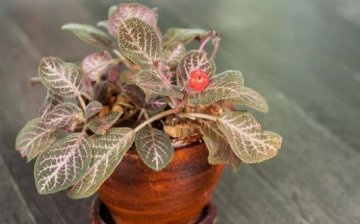
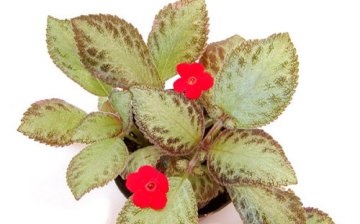
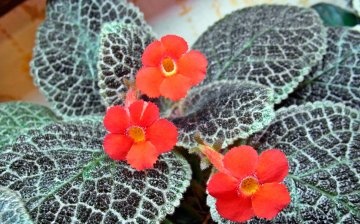
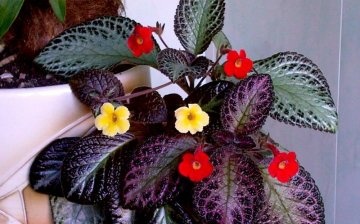
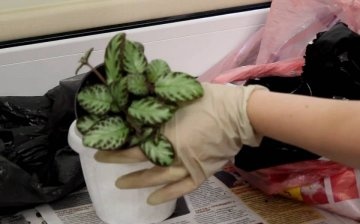
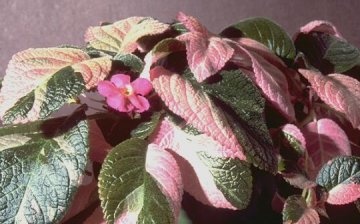







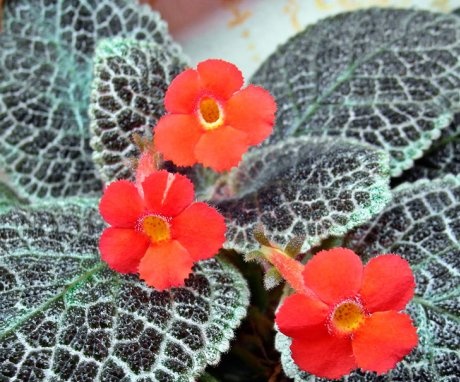
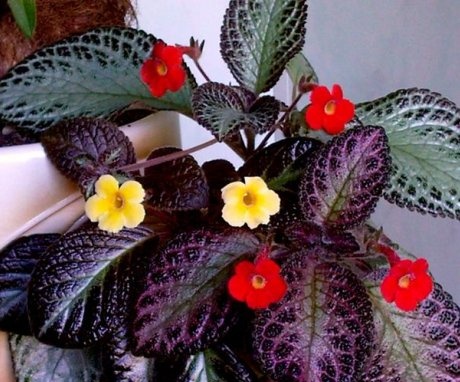

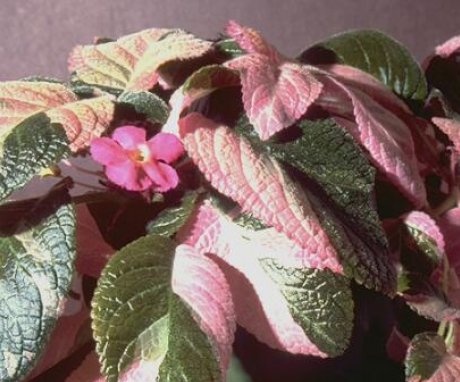
A very beautiful plant, moreover, not only flowers, but also multi-colored leaves with veins. I would not say that it is an unpretentious flower. You will need to take care of him regularly, water, fertilize, spray, monitor the air temperature.